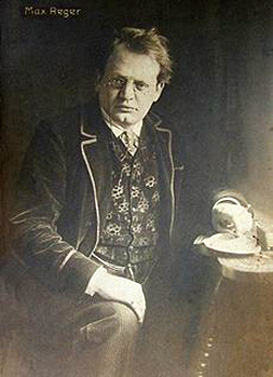As regards eating — a rather important item, by the way — I have kept to the light “Continental” breakfast, which I do not take too early; then a rather substantial luncheon towards 2 o’clock. My native macaroni, specially prepared by my chef, who is engaged particularly for his ability in this way, is often a feature in this midday meal. I incline towards the simpler and more nourishing food, though my tastes are broad in the matter, but I lay particular stress on the excellence of the cooking, for one cannot afford to risk one’s health on indifferently cooked food, no matter what its quality.
On the nights when I sing I take nothing after luncheon, except perhaps a sandwich and a glass of Chianti, until after the performance, when I have a supper of whatever I fancy within reasonable bounds. Being blessed with a good digestion, I have not been obliged to take the extraordinary precautions about what I eat that some singers do. Still, I am careful never to indulge to excess in the pleasures of the table, for the condition of our alimentary apparatus and that of the vocal cords are very closely related, and the unhealthy state of the one immediately reacts on the other.
My reason for abstaining from food for so long before singing may be inquired. It is simply that when the large space required by the diaphragm in expanding to take in breath is partly occupied by one’s dinner the result is that one cannot take as deep a breath as one would like, and consequently the tone suffers, and the all-important ease of breathing is interfered with. In addition, a certain amount of bodily energy is used in the process of digestion which would otherwise be entirely given to the production of the voice.
These facts, seemingly so simple, are very vital ones to a singer, particularly on an opening night. A singer’s life is such an active one, with rehearsals and performances, that not much opportunity is given for exercise, and the time to do this must, of course, be governed by individual needs. I find a few simple physical exercises in the morning after rising, somewhat similar to those practiced in the army, or the use for a few minutes of a pair of light dumb-bells, very beneficial. Otherwise I must content myself with an occasional automobile ride. One must not forget, however, that the exercise of singing, with its constant deep inhalation (and acting in itself is considerable exercise also), tends much to keep one from acquiring an oversupply of embonpoint.
A proper moderation in eating, however, as I have already said, will contribute as much to the maintenance of correct proportion in one’s figure as any amount of voluntary exercise which one only goes through with on principle.
On the subject of whether one should or should not drink intoxicants, you may inquire what practice is, in my opinion, most in consonance with a singer’s well-being. Here again, of course, customs vary with the individual. In Italy, we habitually drink the light wines of the country with our meals, and surely are never the worse for it. I have retained my fondness for my native chianti, which I have even made on my own Italian estate, but believe and carry out the belief that moderation is the only possible course. I am inclined to condemn the use of spirits, whisky in particular, which is so prevalent in the Anglo-Saxon countries, for it is sure to inflame the delicate little ribbons of tissue which produce the singing tone, and then — addio to a clear and ringing high C!
Though I indulge occasionally in a cigarette, I advise all singers, particularly young singers, against this practice, which can certainly not fail to have a bad effect on the delicate lining of the throat, the vocal cords, and the lungs.
You will see by all foregoing that even the gift of a good breath is not to be abused or treated lightly, and that the “goose with the golden egg” must be most carefully nurtured.











